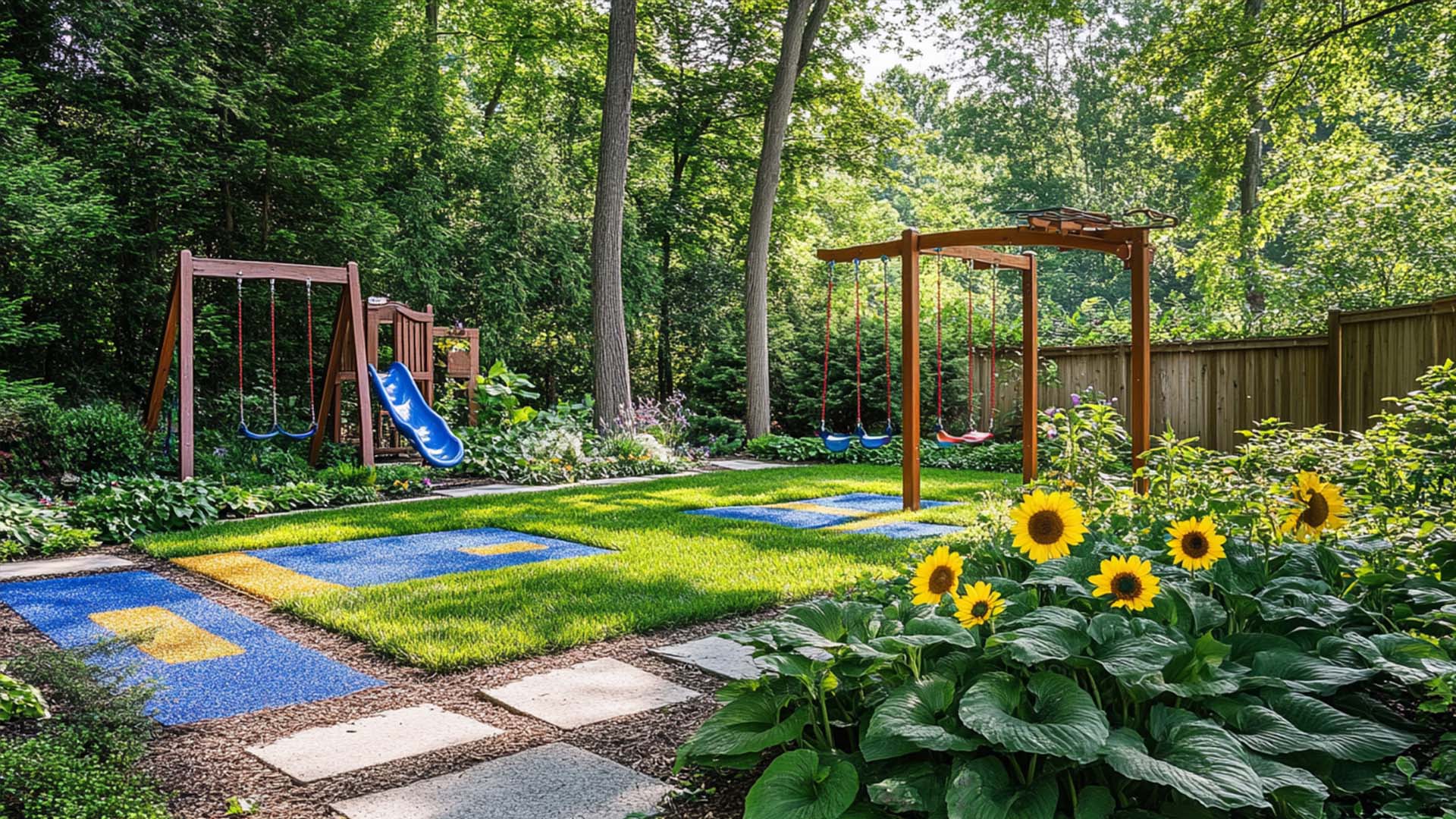Creating a kid-friendly garden is an opportunity to craft a delightful oasis where children can play, explore, and connect with nature, all while maintaining an aesthetically pleasing environment for adults. The key lies in striking the right balance between crafting a fun space for kids and providing a beautiful landscape for the entire family. When designing a kid-friendly garden, it’s essential to ensure that safety, functionality, and visual appeal work harmoniously together to create an enjoyable, family-friendly outdoor space. Regardless of whether you’re working with a compact backyard or a larger plot of land, there are endless creative ways to make your garden both practical and beautiful.
Prioritizing Safety
In any kid-friendly garden, safety must always be the top priority. Begin by selecting soft ground materials, such as grass, rubber mulch, or wood chips, to cushion falls and prevent injuries during play. Ensuring there are no sharp edges or hazardous areas is crucial. For features like ponds or swimming pools, consider installing child-safe fencing to keep curious little ones at a safe distance. It’s also essential to opt for non-toxic, thorn-free plants to further reduce the risk of harm to children.
Tip: Install smooth, slip-resistant pathways that enable children to move around freely while minimizing the risk of trips and falls. This not only enhances safety but also encourages kids to explore their outdoor space confidently.
Designing Play Zones
To create a truly engaging environment, incorporate distinct play areas tailored to your children’s interests. Consider adding features like a sandbox, climbing structure, or mini obstacle course to encourage physical activity and keep kids entertained for hours. Water features such as splash pads or shallow fountains can introduce an interactive element to the space, offering children a way to cool off on hot days. For quieter activities, designate a corner for children to engage in gardening or simply observe nature, fostering a sense of wonder and curiosity.
Blending natural materials, such as wood or stone, with play equipment ensures that these elements fit seamlessly into the overall design, enhancing the garden's beauty rather than detracting from it. Natural play structures, like a wooden climbing frame or a log balance beam, can add both fun and aesthetic value to the landscape.
Incorporating Nature for Exploration
Children are inherently curious beings, and a kid-friendly garden should be designed to stimulate their sense of discovery. Create exploration areas with winding paths, stepping stones, or hidden nooks where kids can engage in imaginative play. Consider adding sensory gardens featuring fragrant herbs, vibrant flowers, and textured plants to enhance their connection to nature and provide a hands-on learning experience. These elements encourage children to engage with the environment and foster a love for the outdoors.
Pro Tip: Plant a small vegetable garden or butterfly-friendly plants to turn gardening into an exciting educational project for kids. Watching the growth of plants or the arrival of butterflies can ignite a passion for nature and gardening in young minds.

Choosing Low-Maintenance, Kid-Resistant Plants
A crucial aspect of maintaining a kid-friendly garden involves selecting durable, low-maintenance plants that can withstand occasional rough play. Opt for hardy plants like lavender, marigolds, or ornamental grasses that are resilient and require minimal care. These plants not only survive the rigors of children playing in the garden but also contribute vibrant colors and textures to the landscape.
Utilizing raised beds is an excellent way to protect more delicate plants while simultaneously teaching children about gardening. Raised beds can be a great project to involve kids, allowing them to learn about plant care and responsibility. Additionally, evergreen shrubs can create natural borders around play areas, adding structure and greenery without sacrificing functionality.
Balancing Aesthetic Appeal
Designing a garden for children doesn’t mean sacrificing aesthetics. The goal is to create a harmonious blend of beauty and functionality that appeals to all family members. Use colorful flower beds, vibrant planters, and attractive garden furniture to keep the space visually appealing. Incorporating well-designed pathways can lead from one section of the garden to another, adding flow and structure that enhances the overall experience.
Tip: Strategically placed seating areas can provide adults with a relaxing space while keeping an eye on children at play. Comfortable benches or patio chairs near play zones allow parents to enjoy the garden's beauty while ensuring that their little ones are safe and engaged.
Incorporating Educational Features
In addition to play areas and sensory experiences, consider adding educational features to your kid-friendly garden. A small weather station or a butterfly house can spark curiosity and provide opportunities for learning. Incorporating interactive elements like garden signs that teach kids about plants or wildlife can foster a deeper appreciation for the environment.
Community Involvement
If you have the space and inclination, consider involving neighbors or friends in your gardening efforts. Organizing a community gardening day where children can plant seeds or bulbs fosters a sense of community and cooperation. This not only enhances their understanding of teamwork but also creates lasting memories.
A well-designed kid-friendly garden can truly offer the best of both worlds—a safe, fun space for kids to enjoy and a serene, visually stunning environment for adults. By thoughtfully prioritizing safety, designing engaging play zones, incorporating elements of nature, selecting suitable plants, and balancing aesthetics, your garden can become a cherished family retreat for years to come. Whether it’s a place for children to unleash their creativity, learn about nature, or simply enjoy the great outdoors, a kid-friendly garden is a valuable addition to any home. With careful planning and creativity, your outdoor space can inspire wonder and joy for all family members.
